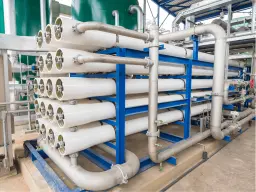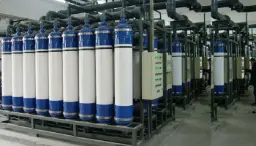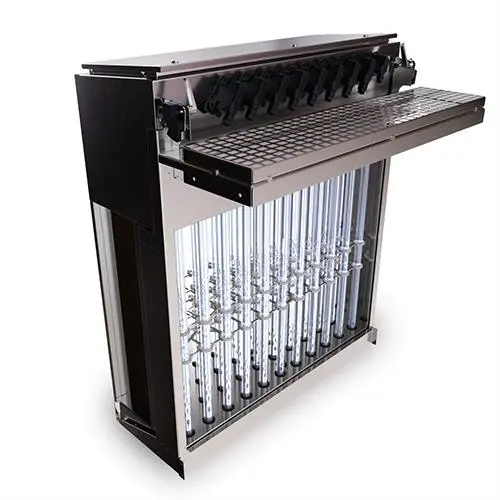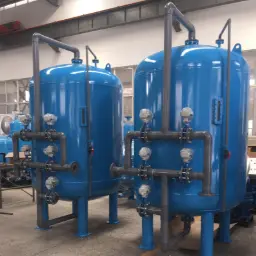Leachate Treatment
Heap leaching has become a dominant extraction technique for low-grade gold, copper, and silver ores across the mining and metallurgy landscape, yet the pregnant solutions dripping from stacked heaps carry more than dissolved value metals. They also entrain free and complexed cyanide, thiocyanate, ammonia, nitrate, sulfate, and an array of entrained fines that leach out iron, zinc, copper, and mercury. Leachate treatment therefore stands as a critical safeguard between metallurgical success and environmental liability. In simple terms, leachate treatment for mining and metallurgy refers to the engineered sequence of physical, chemical, and sometimes biological operations designed to remove or transform toxic constituents so that water can be safely discharged, recirculated, or reused. Without robust detoxification, cyanide and dissolved metals pose acute hazards to aquatic ecosystems and downstream potable supplies, while scaling ions threaten the very heap irrigation circuits miners depend on for recovery.
In practice, the treatment train bridges the gap between metallurgical objectives and regulatory expectations. Operators first balance pH to optimize cyanide destruction kinetics, then dose oxidants or sulfur-based reagents that break the powerful metal-cyanide bond. Clarification or filtration captures precipitated metal hydroxides, while advanced membrane or ion exchange polishing achieves the low microgram-per-liter limits now commonplace in stringent jurisdictions like Nevada, Queensland, and Ontario. Throughout each stage, plant designers must reconcile fluctuating flow rates that mirror seasonal rainfall as well as cyanide spikes triggered by blasting campaigns or solution upsets. As zero-liquid-discharge and water-reuse directives gain traction, modern leachate treatment also incorporates energy-efficient evaporation, crystallization, and brine management loops. Ultimately, effective leachate treatment safeguards worker health, protects fragile arid-zone water resources, and ensures social licence in communities increasingly sensitive to mining’s environmental footprint.
Water Treatment Systems Used
Effective control of heap leachate quality hinges on a mosaic of complementary technologies. Engineers seldom rely on a single “silver bullet.” Instead, they design trains that combine oxidative destruction, selective recovery, and high-efficiency polishing so that each contaminant class is addressed at the lowest possible lifecycle cost. Seasoned practitioners recognise that reagent prices, lime availability, site elevation, and power tariffs all influence the final selection, yet the same foundational unit operations appear repeatedly from Chile’s Atacama to Ghana’s Ashanti belt. In the paragraphs that follow, we spotlight the systems most frequently deployed, describe how they operate in the mining context, and show why pairing them strategically delivers both regulatory compliance and economic upside. Ground-up understanding of these options empowers metallurgists and environmental managers to tailor fit-for-purpose solutions rather than copy-pasting generic municipal flowsheets. Continual advances in sensor analytics, digital twin modelling, and renewable-powered oxidation reactors further expand possibilities, making now an opportune moment to revisit any legacy detox facility that struggles with throughput or reliability.

Reverse Osmosis
Uses semi-permeable spiral-wound membranes to reject sulfate, nitrate, selenium, and trace metals below parts-per-billion levels, producing a permeate suitable for make-up water while concentrating remaining salts in a brine stream.

SO₂/Air (INCO) Cyanide Destruction
Combines sulfur dioxide gas or liquid bisulfite with air and copper catalyst at pH 8-9, rapidly converting free and weak acid dissociable cyanide to non-toxic thiocyanate and sulfate.

Hydrogen Peroxide-UV Advanced Oxidation
Harnesses ultraviolet lamps and peroxide injection to generate hydroxyl radicals that oxidise recalcitrant thiocyanate and degrade residual cyanate to nitrogen gas and carbon dioxide.

Deionization
Deploy weak-base or chelating resins that selectively capture thiocyanate, copper-cyanide complexes, and arsenic, enabling closed-loop water reuse without accumulating toxic anions.
These systems form a synergistic toolkit. Oxidative or sulfide-based stages dismantle cyanide complexes, lime treatment locks liberated metals into an insoluble form, and membrane or resin polishing drives the final effluent well below discharge criteria even when seasonal dilution flows vanish. By staging removal mechanisms according to contaminant chemistry, plants minimise reagent consumption, reduce sludge disposal costs, and maintain the cyanide speciation balance required for optimal gold or copper recovery on the heap.
Key Water-Quality Parameters Monitored
Comprehensive leachate management involves continuous attention to a constellation of interrelated parameters. Free cyanide concentration dictates toxicity to fish and dictates the oxidant dose required for destruction. Weak acid dissociable (WAD) cyanide provides a finer measure of bio-available toxicity, accounting for zinc- and copper-bound forms that release under mildly acidic conditions typical of stomach acidity in wildlife. Thiocyanate acts as an operational barometer for inefficient SO₂/air or peroxide oxidation and can also reactivate under sunlight if left unchecked. Heavy metals such as arsenic, cadmium, lead, and mercury attract public scrutiny due to their persistence and potential for bioaccumulation, while copper levels directly influence cyanide speciation and gold-leaching kinetics. Conductivity and sulfate reflect salt build-up that can foul irrigation drippers and induce osmotic stress in crops if mine water is earmarked for agricultural reuse.
pH and oxidation-reduction potential (ORP) underpin every control loop. High pH stabilises cyanide as the unreactive CN⁻ ion yet suppresses peroxide efficiency, so operators adjust sodium hydroxide or lime feed to steer the sweet spot before each treatment stage. Turbidity and total suspended solids (TSS) mirror the effectiveness of clarification steps and inform flocculant dose adjustments. Dissolved oxygen remains vital for peroxide and SO₂/air oxidation, especially at high altitudes where partial pressure drops. Finally, temperature influences reaction kinetics and membrane flux, making real-time logging essential for adaptive control strategies in regions that swing from sub-zero winters to 40 °C summers.
| Parameter | Typical Range Before Treatment | Control Method |
|---|---|---|
| Free Cyanide (mg L⁻¹) | 50 – 300 | INCO SO₂/air, peroxide, or SART |
| WAD Cyanide (mg L⁻¹) | 20 – 150 | Copper-catalysed oxidation, pH adjustment |
| Thiocyanate (mg L⁻¹) | 100 – 1 000 | UV-peroxide advanced oxidation, ion exchange |
| Dissolved Copper (mg L⁻¹) | 10 – 250 | SART precipitation, lime HDS |
| Arsenic (mg L⁻¹) | 0.5 – 10 | Ferric co-precipitation, RO polishing |
| Sulfate (mg L⁻¹) | 1 000 – 8 000 | Nanofiltration, seeded gypsum crystallisers |
| pH (SU) | 9.5 – 11.0 | Carbon dioxide neutralisation, lime dosing |
| ORP (mV) | −50 – +150 | Peroxide dose, air sparging |
| TSS (mg L⁻¹) | 50 – 400 | Clarifiers, multimedia filtration |
Design & Implementation Considerations
Designing a resilient leachate treatment plant starts with a detailed characterisation of both the heap draindown profile and the local hydrogeological context. Engineers gather composite samples through wet and dry seasons, then perform bottle-roll tests to quantify cyanide speciation, metal solubility, and oxidation kinetics under various reagent scenarios. Flow equalisation basins buffer the diurnal peaks observed after irrigation cycles or storm events, while modular tank-in-tank layouts facilitate future expansion as mine production grows. Climate considerations are pivotal: high-altitude Andean sites rely on propane-fired heaters and insulated pipework to prevent peroxide decomposition in frigid nights, whereas hot Saharan operations integrate cooling towers to maintain membrane integrity. Reagent storage mandates double-walled tanks and leak detection because liquid sulfur dioxide, sodium cyanide, and hydrogen peroxide pose distinct hazards.
Hydraulic residence time (HRT) becomes a delicate trade-off between reaction completeness and capital footprint. Digital twin modelling, fed by real-time SCADA data, now allows iterative optimisation of tank volumes, agitator power, and air sparge rates before a single foundation is poured. Automation systems equipped with Raman spectrometers and micro-ISE cyanide probes provide near-instant feedback, enabling proportional reagent dosing that slashes chemical waste and stabilises effluent quality. Renewable power integration is growing too: solar arrays in Western Australia now energise blower banks for SO₂/air reactors, reducing diesel dependence alongside carbon emissions. Decentralised skid packages gain popularity in junior mines where capex discipline and tight construction schedules rule. Contractors deliver pre-fabricated ISO-container units housing fully wired aeration tanks, lime slakers, filter presses, and membrane racks; once onsite, crews connect utility manifolds and commission within weeks.
Operation & Maintenance
Once the plant is online, disciplined operation sustains permit compliance and cost control. Shift technicians begin each round by verifying reagent day tanks, observing froth patterns in oxidation reactors, and confirming that programmable logic controllers log stable ORP and pH trends. Periodic calibration of cyanide analysers prevents drift that could otherwise trigger over-dosing and balloon chemical spend. Lime slaker grit removal and slurry density checks keep piping free of plugs that risk unplanned shutdowns. In SO₂/air systems, compressor oil carry-over and mist eliminator performance receive particular scrutiny because sulfurous acid vapour promotes rapid corrosion of mild-steel ducting.
Membrane skids demand a different rhythm. Operators perform weekly clean-in-place cycles using soft-acid and caustic solutions to recover flux lost to biofilm or calcium sulfate scaling, documenting normalized permeate flow for early fouling warnings. Pressed HDS cake is monitored for moisture to ensure trucking weight stays within contract limits. Sludge dewatering polymer evaluation triggers quarterly jar tests, as minor changes in ore mineralogy can shift sludge settleability. Predictive maintenance now leverages vibration sensors on agitator gearboxes and anomaly-detection algorithms fed by historian data to forecast seal failures weeks in advance. Site teams cross-train metallurgical operators in environmental compliance tasks so that vacation cover never jeopardises permit commitments.
Challenges & Solutions
Leachate treatment faces a trifecta of technical, climatic, and economic challenges. Cyanide speciation varies unpredictably when ore mineralogy transitions from oxide to sulfide zones, leading to sudden surges in copper-cyanide complexes that overwhelm peroxide set points. Plants counter this by installing bleed-forward SART modules or by diverting high-copper leachate to dedicated equalisation ponds where residence time buys reaction headroom. At sites with scarce freshwater, permeate recovery above 90 % is mandated, yet sulfate and nitrate creep foils simple RO reuse. To break the osmotic ceiling, engineers deploy seeded gypsum crystallisers, while emerging monovalent-selective RO membranes cut sodium and sulfate concurrently.
Cold climates slow reaction kinetics and raise peroxide decomposition, so operators insulate tanks, switch to potassium permanganate boosters, or leverage dissolved-ozone generators whose output climbs as water temperature drops. Sludge management remains a perennial headache: metal-laden cakes classified as hazardous in some jurisdictions impose high disposal fees. Innovative cementitious encapsulation converts this liability into aggregate for backfilling stopes, closing the loop. Financial pressures mount whenever commodity prices slump, prompting miners to explore toll-treatment partnerships where third-party firms bankroll plant upgrades in return for metal credits captured from SART precipitate.
Advantages & Disadvantages
Mining firms weigh many factors before green-lighting a new leachate treatment facility. On the upside, modern trains sharply curtail freshwater withdrawals, allowing operations in arid basins that would otherwise be off-limits. By recovering copper and, in some cases, zinc or silver from SART circuits, plants create incremental revenue streams that offset reagent costs. Regulatory compliance becomes more straightforward, reducing the risk of expensive fines, litigation, or mandated production halts. Treatment also improves metallurgical efficiency by stabilising recycle streams, leading to higher metal extractions and lower sodium cyanide consumption. Finally, ESG performance dashboards bolstered by low effluent toxicity scores appeal to socially responsible investors and facilitate financing.
There are drawbacks too. Capital expenditure can exceed USD 15 000 per cubic metre per hour of design flow when advanced oxidation and RO are required. Reagent logistics, particularly liquid sulfur dioxide and hydrogen peroxide, necessitate additional safety training and contingency planning for remote desert or high-altitude sites. Energy demand climbs with each aeration blower, agitator, and high-pressure pump added, potentially offsetting sustainability gains unless renewable generation is integrated. Sludge disposal, even when handled on-site, ties up land and requires perpetual monitoring against acid generation. Technological complexity can outstrip local workforce experience, compelling companies to import expatriate specialists until knowledge transfer is complete.
| Aspect | Advantages | Disadvantages |
|---|---|---|
| Environmental Compliance | Meets stringent cyanide and metal limits, enables water reuse | Creates hazardous sludge needing secure disposal |
| Economic Impact | Recovers saleable copper via SART, lowers cyanide make-up | High capex and reagent costs when flow fluctuates |
| Operational Performance | Stabilises heap solution chemistry, boosts recovery | Requires skilled staff and sophisticated controls |
| Sustainability & ESG | Cuts freshwater withdrawal, supports zero-liquid-discharge | Increased energy footprint for membranes and blowers |
Frequently Asked Questions
Q: How does leachate treatment differ from acid mine drainage treatment?
A: Leachate from heap leaching contains high cyanide and metal-cyanide complexes due to intentional metallurgical dissolution, whereas acid mine drainage results from spontaneous sulfide oxidation and is characterised by acidity and dissolved metals with little cyanide. Treatment trains therefore emphasise oxidative destruction in leachate plants and lime neutralisation in acid drainage facilities, though both may share lime HDS and RO polishing steps.
Q: What is the typical residual free cyanide target for discharge?
A: Most jurisdictions limit free cyanide to below 0.02 mg L⁻¹ to protect aquatic life, while some remote arid regions permit 0.05 mg L⁻¹ if dilution and natural attenuation can be proven. Weak acid dissociable cyanide targets often sit at 0.1 mg L⁻¹ or lower.
Q: Can treated leachate be reused directly for irrigation?
A: Yes, provided sulfate, nitrate, and total dissolved solids fall within agronomic guidelines, and special attention is given to residual thiocyanate, which can be phytotoxic. Membrane polishing and soil salinity studies are essential prerequisites.
Q: What are emerging technologies to watch?
A: Photocatalytic ozonation powered by concentrated solar, electrogenerated ferrate for simultaneous oxidation and coagulation, and machine-learning-driven reagent control platforms are gaining pilot traction. Low-pressure forward osmosis paired with membrane distillation also shows promise for brine minimisation.
Q: How does ore type influence reagent choice?
A: High-copper ores favour SART because copper recovery funds cyanide regeneration. Refractory carbonaceous ores that adsorb precious metals demand peroxide-based detox to avoid thiocyanate build-up, while sulfide-rich ores often need supplemental air stripping to cope with high ammonia-nitrogen releases during oxidative breakdown.
Q: What is the service life of RO membranes in leachate duty?
A: With proper pre-treatment and quarterly clean-in-place protocols, spiral-wound polyamide elements typically last 3-5 years before permeability loss or irreversible fouling dictates replacement. Emerging brackish-water membranes with improved chemical tolerance can extend service life beyond six years in well-managed plants.
Q: Does leachate treatment impact heap gold recovery?
A: Yes, by recycling cyanide recovered via SART or reducing dissolved copper that competes with gold for cyanide, the treatment circuit can lower fresh cyanide make-up by up to 40 %, improve solution grades, and ultimately boost overall metal yield.
Q: What key performance indicators (KPIs) are tracked?
A: Operators monitor reagent consumption per tonne of ore, percent cyanide destruction efficiency, membrane specific flux, sludge solids content, downtime hours, and cost per cubic metre treated to gauge both environmental and financial performance.
Q: How are treatment plants financed in new projects?
A: Many juniors opt for build-own-operate models where a specialist contractor funds capex and charges a per-cubic-metre fee; majors often integrate the plant into the overall mine development budget and amortise costs over life of mine.
Q: Can passive systems replace active leachate treatment?
A: Passive constructed wetlands and bioreactors can polish low-strength effluents, yet they seldom achieve the rapid cyanide destruction and heavy-metal removal required for high-strength leachates without enormous land footprints, making them complementary rather than replacement options.
Q: What role does digitalisation play today?
A: Cloud-connected sensors feed predictive models that adjust SO₂, peroxide, or lime dosing in real time, cut chemical waste, and issue maintenance alerts well before a pump or analyzer fails.
Q: How is sludge volume minimised?
A: Recirculating underflow in HDS trains, optimizing flocculant selection, and employing vacuum belt filtration can raise solids to 65 % w/w, slashing haulage costs. Some operators blend dried cake with cement paste to encapsulate residual metals for underground backfill.
Q: Are there safety concerns unique to leachate treatment?
A: Handling liquid SO₂ involves asphyxiation risk, while peroxide can violently decompose in contact with organics. Rigorous PPE, double-containment piping, and emergency scrubbers mitigate these hazards.
Q: How quickly can a modular plant be brought online?
A: Factory-tested package plants can reach mechanical completion in 12-16 weeks from order placement, particularly when civil works are limited to concrete pads and secondary containment walls.
Q: Does climate change affect plant design?
A: Increased storm intensity demands larger surge ponds, while longer droughts elevate the importance of water-reuse loops and brine minimisation technologies to ensure operational continuity.